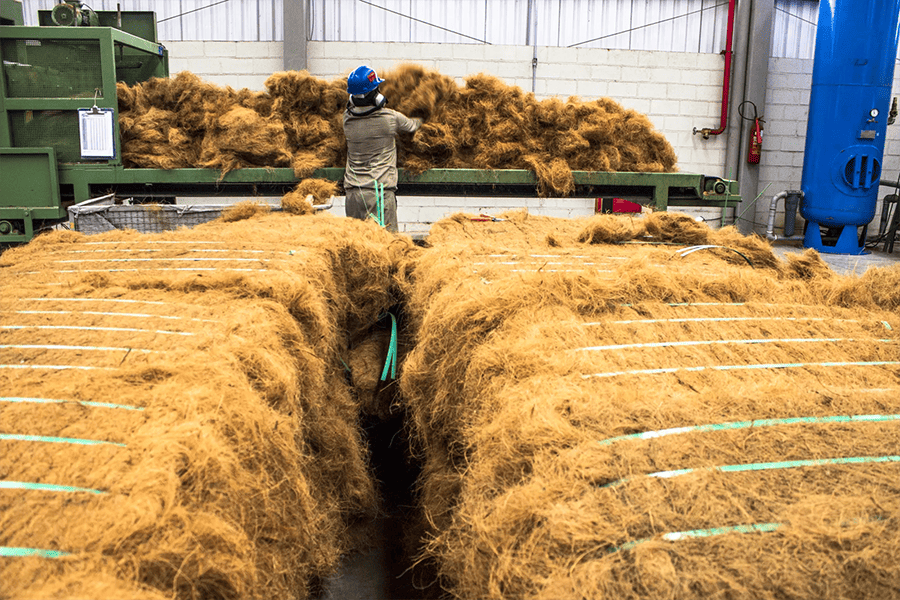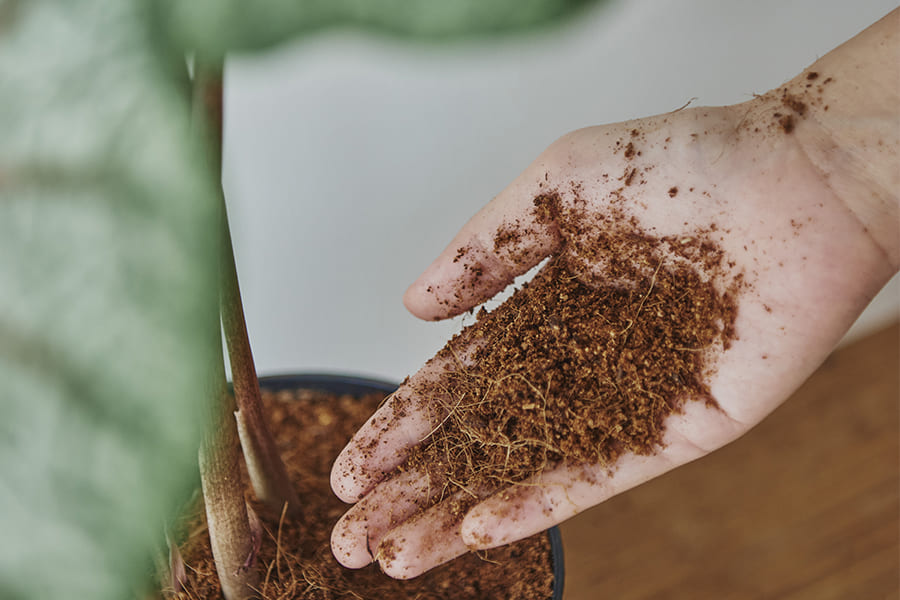BLOG POSTS & ARTICLES
Sustainable Gardening with Coco Coir: Benefits and Techniques

In a world where environmental consciousness has become an integral part of our daily lives, the art of gardening has also embraced the ethos of sustainability. Sustainable gardening goes beyond the simple act of growing plants; it involves nurturing our natural surroundings while minimizing our ecological footprint. With climate change and resource depletion casting a shadow on traditional gardening practices, the need for eco-friendly alternatives has never been more pressing.
Research from the University of Sheffield sheds light on the benefits of sustainable gardening. Their study reveals that sustainable gardening doesn't only contribute to healthier plants; it can also enhance air quality, promote overall well-being, and even provide people with the chance to cultivate their own food. With findings like these, it's evident that sustainable gardening extends far beyond just aesthetics—it's a pathway to a greener and more sustainable future for individuals and the planet alike.
Coco coir this unique substance comes from the tough outer layer of coconuts and has become a versatile and sustainable option for gardening. It brings a host of advantages for both gardeners and the planet. But what exactly is coco coir, and how does it fit into the bigger picture of sustainable gardening? Let's see!
What this blog holds?
As we dive deeper into the realm of sustainable gardening, this blog post serves as your guiding light. Our aim is twofold: first, to unravel the manifold benefits that coco coir brings to your gardening endeavors, and second, to equip you with practical techniques for seamlessly integrating this eco-friendly medium into your gardening practices.
From replenishing the soil with essential nutrients to naturally suppressing weeds, coco coir holds the potential to revolutionize the way you nurture your plants. By harnessing the power of coco coir, we can embrace a gardening ethos that resonates with the rhythms of nature, reducing our reliance on harmful chemicals and minimizing our environmental impact.
So, whether you're a seasoned horticulturist or a budding green thumb, join us on this journey of exploration and transformation. Let's delve into the world of sustainable gardening with coco coir, where the fusion of science, nature, and conscientious cultivation takes root.
Coco Coir:
Coco coir often hailed as "nature's miraculous fiber," originates from the unassuming coconut, a common sight in tropical landscapes. Once considered mere waste after the edible part of the coconut was extracted, its husk has now earned a new purpose as a gardening marvel. Through a series of harvesting, soaking, and processing steps, coconut husks undergo a transformation into coco coir—an exceptional fibrous material with remarkable qualities.
The magic of coco coir lies in its impressive water retention capabilities, ensuring that plants can access moisture even during the most arid conditions. It strikes an impeccable balance between allowing water to drain and holding onto it, thus averting the risks of over- or underwatering. Moreover, coco coir maintains a neutral pH, creating a steady and adaptable haven for plants of all kinds. Its inherent talent to steadily retain and gradually release nutrients lends robust support to lush and vigorous growth, reducing the need for excessive fertilization.
Benefits of Coco Coir in Sustainable Gardening
- Reduced Environmental Footprint: Traditional peat moss extraction contributes to habitat destruction and carbon emissions. By using coco coir instead, gardeners help conserve delicate peatland ecosystems and decrease their carbon footprint.
- Water Conservation: Coco coir's exceptional water retention ability reduces the need for frequent irrigation. This conserves water resources and promotes responsible water management.
- Nutrient Retention: Coco coir retains nutrients effectively, minimizing fertilizer runoff and nutrient wastage. This supports healthy plant growth while mitigating water pollution.
- Erosion Control: Coir's fibrous structure makes it an excellent erosion control tool in gardens. It stabilizes soil, prevents erosion, and encourages the establishment of plants in vulnerable areas.
- Reusability: Coco coir can be reused multiple times after sterilization and rejuvenation. This reduces waste and promotes a circular gardening economy.
- pH Neutrality: Unlike peat, which tends to be acidic, coco coir has a neutral ph. This makes it a versatile growing medium for a wide range of plants and allows gardeners greater control over soil conditions.
Techniques for Incorporating Coco Coir into Your Garden
Soil Amendment and Potting Mixes
When crafting a nourishing environment for your plants, coco coir proves to be an invaluable addition. To create a balanced and water-efficient potting mix, combine coco coir with compost and other essential components. A typical ratio to consider is one part coco coir, one part compost, and one part a well-draining material like perlite or vermiculite. Adjust these ratios according to the specific needs of your plant types, keeping in mind that the addition of coco coir will enhance the mix's water-holding capacity, reducing the frequency of irrigation.
Seed Starting and Germination
Coco coir's unique ability to retain moisture makes it a champion when it comes to germinating seeds. To kickstart your plants' journey, prepare a seed-starting tray by filling it with moistened coco coir. Gently press the seeds into the coir's surface, ensuring they are at the recommended depth. Cover the tray with a clear plastic lid or plastic wrap to create a mini greenhouse effect that retains moisture. As your seeds sprout, the coco coir will provide a nurturing environment that promotes healthy root development.
Transplanting and Root Health
Transplanting can be a stressful experience for plants, particularly when their delicate root systems are disturbed. Enter coco coir as a root-friendly solution. Its loose and fibrous structure minimizes root disturbance during the transplanting process. To prepare for a smooth transplantation, mix coco coir with your soil mix to enhance water retention and provide an airy substrate for roots to establish quickly. When placing your plant into its new home, the coco coir blend offers a supportive transition that aids in reducing shock and encourages faster growth.
Mulching and Weed Control
Harnessing the power of coco coir goes beyond the root zone—it extends to the surface. As a natural mulch, coco coir acts as a protective blanket for your garden soil. Apply a layer of coco coir mulch around your plants to prevent weed growth by suffocating their emergence. This layer also helps to regulate soil temperature and retain moisture, reducing the need for excessive watering. Regularly replenish the mulch layer to maintain its effectiveness and keep your garden flourishing.
Composting and Sustainability
Sustainability is at the heart of coco coir's journey from waste to resource. Extend its lifecycle by incorporating it into your compost pile. Coco coir enhances compost structure, allowing for better aeration and moisture retention. As it breaks down, it adds valuable organic matter to your compost, enriching its nutrient content. Embrace the closed-loop sustainability model by transforming coconut husk waste into a gardening treasure, promoting a cycle of ecological balance and minimizing waste in the process.
Conclusion
By choosing coco coir, you're not just gardening; you're making a positive impact. You're conserving water, supporting healthy roots, and even helping local communities. It's a small step that adds up to big changes. As you step into your garden, remember that your choices matter. With coco coir, you're not just growing plants—you're growing a greener, more sustainable future. So, go ahead and let coco coir be your partner in this journey towards a healthier and happier Earth. Happy gardening!












__(3).jpg)








